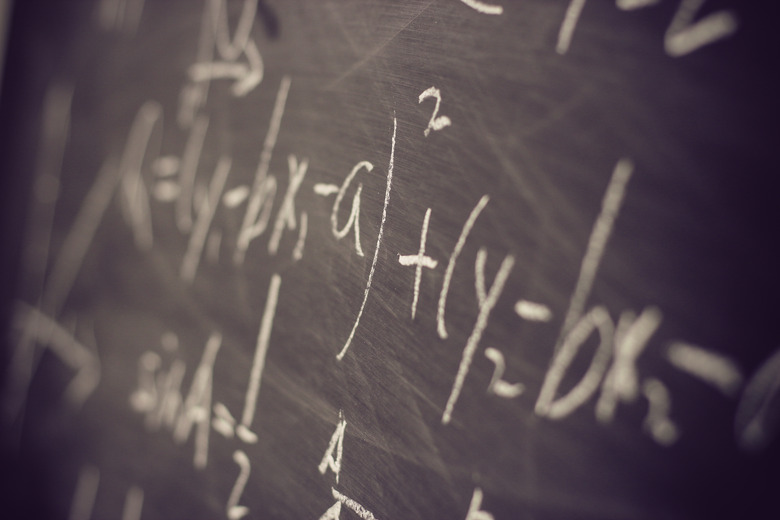Difference Between Linear Equations & Linear Inequalities
Algebra is the division of math concerned with operations and relations. Its areas of focus range from solving equations and inequalities to graphing functions and polynomials. Algebra's complexity grows with increasing variables and operations, but it starts its foundation in linear equations and inequalities.
TL;DR (Too Long; Didn't Read)
Key differences between linear equations and inequalities include the number of possible solutions and how they're graphed.
Linear Equations
Linear Equations
A linear equation is any equation involving one or two variables whose exponents are one. In the case of one variable, one solution exists for the equation. For example, with
\(2x = 6\)
x can only be 3.
Linear Inequalities
Linear Inequalities
A linear inequality is any statement involving one or two variables whose exponents are one, where inequality rather than equality is the center of focus. For instance, with
\(3y < 2\)
the "<" represents less than and the solution set includes all numbers
\(y < 2/3\)
Equation Solutions
Equation Solutions
One obvious difference between linear equations and inequalities is the solution set. A linear equation of two variables can have more than one solution.
For instance, with
\(x = 2y + 3\)
(5, 1), then (3, 0) and (1, -1) are all solutions to the equation.
In each pair, x is the first value and y is the second value. However, these solutions fall on the exact line described by
\(y = \frac{1}{2} x – \frac{3}{2}\)
Inequality Solutions
Inequality Solutions
If the inequality were
\(x > 2y + 3\)
multiple solutions would exist, for example (3, -1), (3, -2), (3, -3) and many others, where more than one solution can exist for the same value of x or the same value of y only for inequalities. The first number in each pair is the x value and the second is the y value.
Graph Lines
Graph Lines
The graph of linear inequalities include a dashed line if they are greater than or less than but not equal to. Linear equations, on the other hand, include a solid line in every situation. Moreover, linear inequalities include shaded regions whereas linear equations do not.
Equation Complexities
Equation Complexities
The complexity of linear inequalities outweighs the complexity of linear equations. While the latter involves simple slope and intercept analysis, the former (linear inequalities) also involves deciding where to shade in the graph as you account for the additional set of solutions.
Cite This Article
MLA
Smith, Sky. "Difference Between Linear Equations & Linear Inequalities" sciencing.com, https://www.sciencing.com/difference-linear-equations-linear-inequalities-6188374/. 16 November 2020.
APA
Smith, Sky. (2020, November 16). Difference Between Linear Equations & Linear Inequalities. sciencing.com. Retrieved from https://www.sciencing.com/difference-linear-equations-linear-inequalities-6188374/
Chicago
Smith, Sky. Difference Between Linear Equations & Linear Inequalities last modified August 30, 2022. https://www.sciencing.com/difference-linear-equations-linear-inequalities-6188374/
